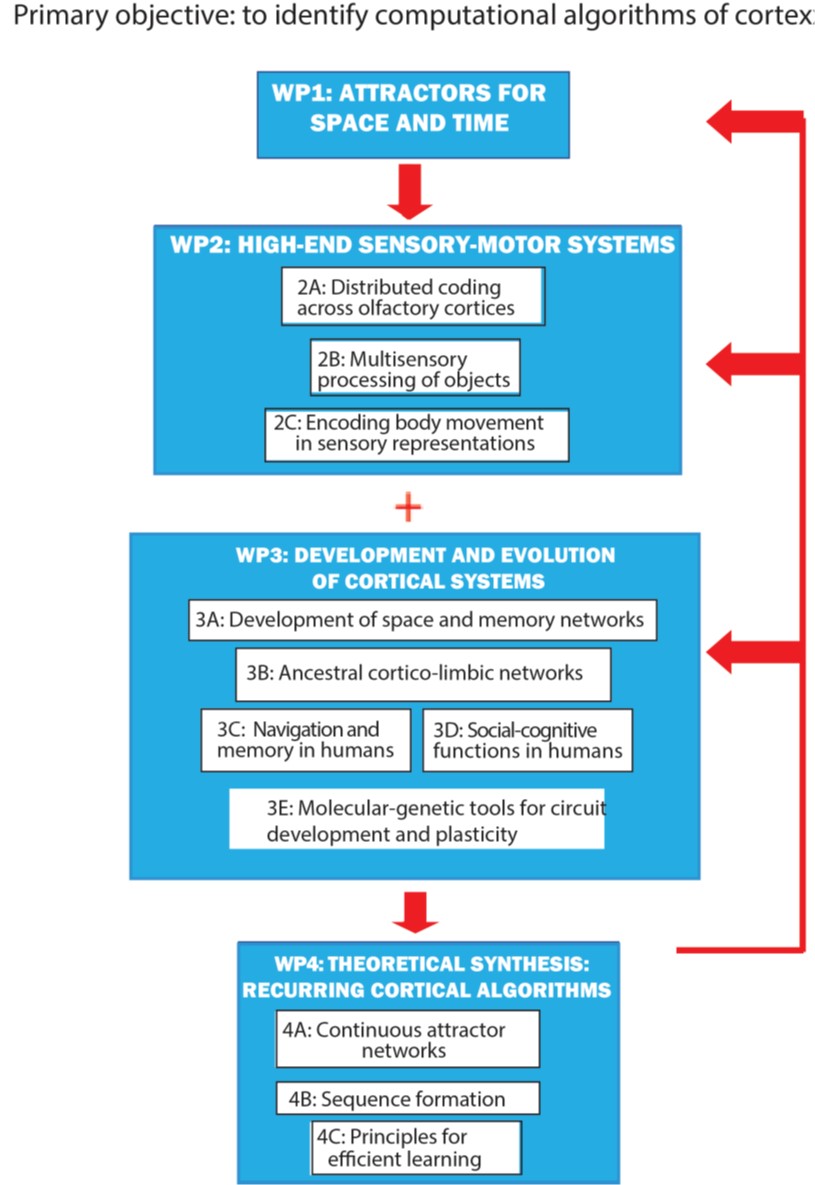WP4B: Connectivity motifs underlying sequential firing - Kavli Institute for Systems Neuroscience
WP4B: Connectivity motifs underlying sequential firing
About
Motivation
Sequential firing (P2) can be produced by connectivity patterns ranging from highly structured circuits, as in the case of some CANs (P1), to less structured circuits that can be adapted through learning (P3). Understanding which connectivity patterns generate sequential dynamics consistent with experimental data, and how those underlie neural computation, requires the development of biologically plausible theoretical models.
Aims
By harnessing large-scale recordings and advances in training of neural networks, we will identify the connectivity patterns underlying sequential dynamics5 and assess their role in neural computation.
We will:
4.4 Determine which connectivity patterns are consistent with observed sequential dynamics in MEC, and how those patterns depend on constraints in the model, e.g. sparseness and presence of functional cell types (P2);
4.5 Determine the interplay between MEC sequences and EC-HPC theta oscillations (P2,P4).
4.6 Determine how sequences support working memory (WP2AC,3B), and learning (P2,P3).
Implementation
We will train recurrent neural networks (RNNs) to reproduce MEC sequence data from WP1. By adjusting the fraction of trained cells, we will assess the relationship between structured connectivity and observed dynamics.
We will extend this approach to include functional cell types, e.g. head direction cells, by combining the RNN with a ring CAN. The connectivity of the model will be compared with connectivity inferred from data (WP1,5A). Perturbations to the trained networks will be used to study robustness.
We will use simulated data to determine whether sequences with characteristics of the MEC5 can bind externally generated population patterns and serve as a backbone for compressible learning.
By combining models of coupled oscillators and inactivation experiments, we will determine whether MEC sequences are orchestrated by theta oscillations. RNNs will be trained to perform working memory tasks as in WP2,3B, to determine whether and how those computations are mediated by sequences. The results will be compared to data from WP2C.

